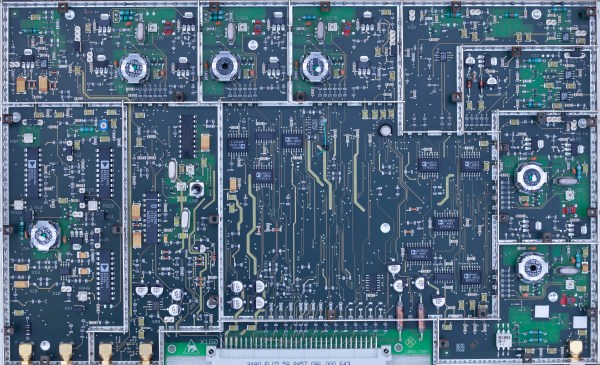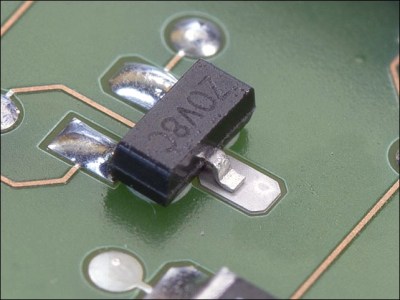It might not count as “DC to daylight,” but an electromechanical attenuator that covers up to 70 GHz is pretty close, and getting a guided tour of its insides is quite a treat.
Perhaps unsurprisingly, this one comes to us from [Shahriar] at “The Signal Path,” where high-end gear most of us never get a chance to work with goes for one last hurrah after it releases the magic smoke. And indeed, that appears to be exactly what happened to the Rohde & Schwarz 75 dB step attenuator, a part that may have lived in the front end of one of their spectrum analyzers. As one would expect from such an expensive component, the insides have some pretty special engineering. The signal is carried through the five attenuation stages on a narrow strip of copper. Each stage uses a solenoid to move the strip between either a plain conductor or a small Pi pad with a specified attenuation. The attention to detail inside the cavity is amazing, with great care taken to maintain the physical orientation of the stripline to prevent impedance mismatches and unwanted reflections.
The Pi pads themselves are fascinating, too, especially under [Shahriar]’s super-duper microscope. All of them were destructively removed from the cavity before getting to him, but it’s still pretty clear what’s going on. That’s especially true with the 5-dB pad, which bears clear signs of the overload that brought on the demise of the whole attenuator. We suppose a repair would have been feasible if it had been just the one pad that needed replacement, but with all of them broken, it’s off to the scrap bin. Or to the recycler — there appears to be plenty of gold in there.
We thought this was a fantastic look under the covers of an exquisitely engineered part. Too bad it didn’t rate the [Shahriar] X-ray treatment, as this multimeter repair or this 60-GHz phased array did. Oh, well — maybe next time.
Continue reading “A Look Inside A 70-GHz Electromechanical Attenuator”















